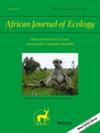Interannual Synchrony in the Post-Breeding Migration Departure of Yellow-Billed Kites (Milvus aegyptius) From a Roost Site in South Africa
IF 1.1
4区 环境科学与生态学
Q4 ECOLOGY
引用次数: 0
Abstract
Yellow-billed kites (Milvus aegyptius) were counted yearly from 2016 to 2024 at a roost site near Pietermaritzburg, South Africa, in the austral autumn. Kite numbers peaked during a short window between the last days of February and the first few days of March, with a maximum count of 3369 in 2017. There was high interannual synchrony in the departure of kites from the roost, with kites departing just prior to 20–26 March in all nine study years. The consistency of departure timing suggests endogenous cues for migration, not environmental cues, given that abundant food was available at a nearby crocodile farm.

南非黄喙鸢(Milvus aegyptius)繁殖后迁徙离场的年际同步性
从2016年到2024年,每年都会在南部秋季南非彼得马里茨堡附近的一个栖息地对黄嘴鸢(Milvus aegyptius)进行计数。风筝数量在2月最后几天到3月前几天的短暂窗口期达到峰值,2017年最多达到3369只。在所有9个研究年度中,风筝离巢的年际同步性较高,在3月20日至26日之前离开。考虑到附近的鳄鱼养殖场有丰富的食物,这种一致性的出发时间表明了迁徙的内生因素,而不是环境因素。
本文章由计算机程序翻译,如有差异,请以英文原文为准。
求助全文
约1分钟内获得全文
求助全文
来源期刊

African Journal of Ecology
环境科学-生态学
CiteScore
2.00
自引率
10.00%
发文量
134
审稿时长
18-36 weeks
期刊介绍:
African Journal of Ecology (formerly East African Wildlife Journal) publishes original scientific research into the ecology and conservation of the animals and plants of Africa. It has a wide circulation both within and outside Africa and is the foremost research journal on the ecology of the continent. In addition to original articles, the Journal publishes comprehensive reviews on topical subjects and brief communications of preliminary results.
 求助内容:
求助内容: 应助结果提醒方式:
应助结果提醒方式:


